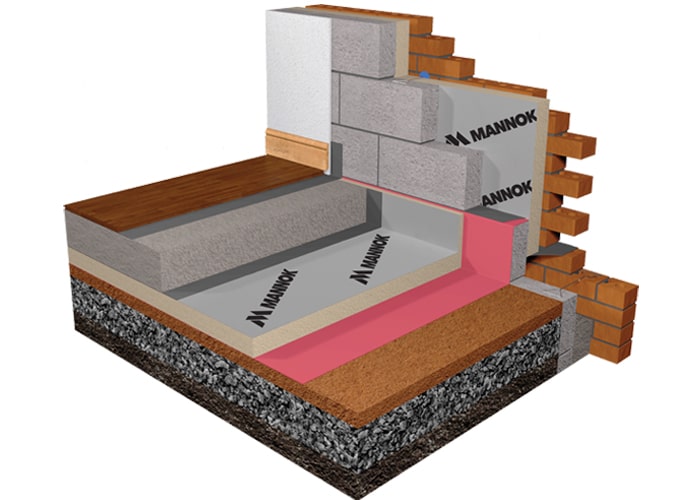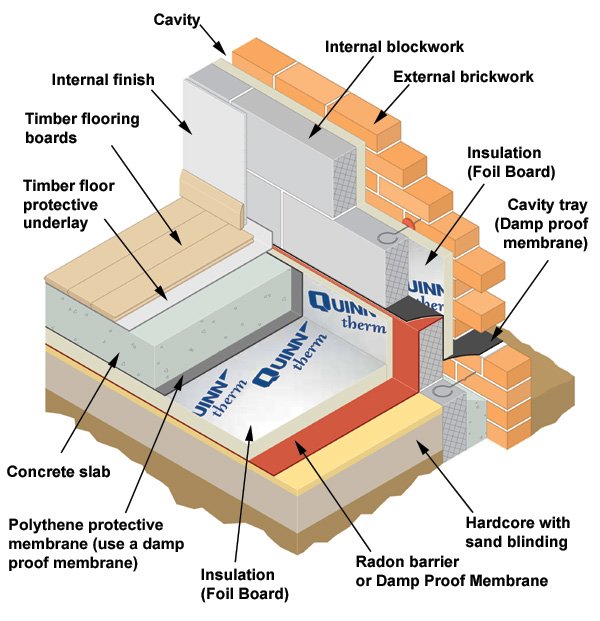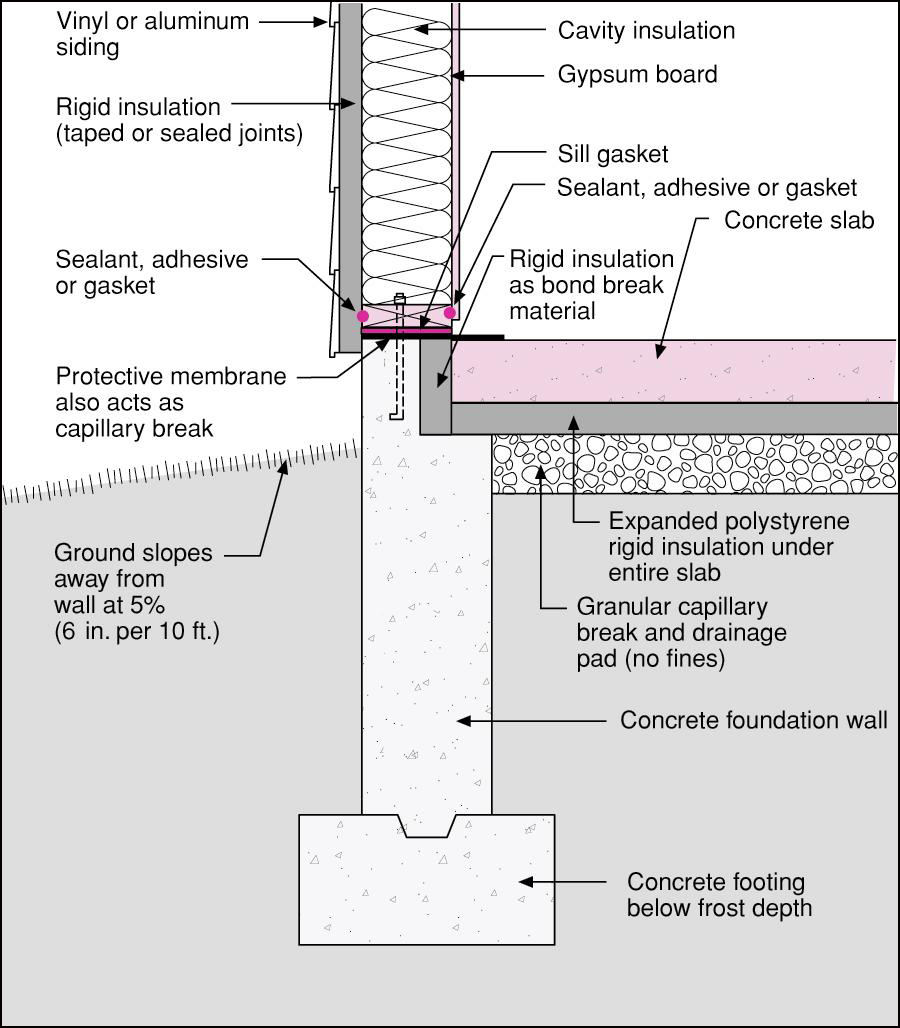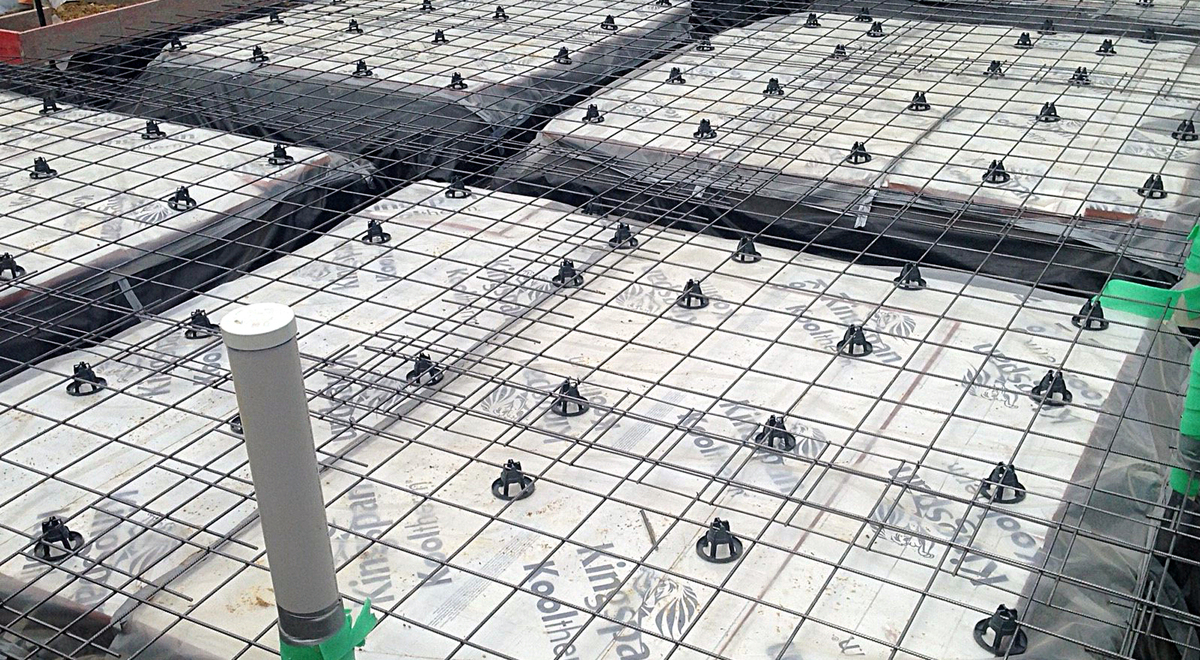The Importance of Concrete Floor Slab Insulation
Concrete floor slab insulation is a crucial aspect of any building’s thermal performance. By insulating the concrete floor slab, you can significantly improve energy efficiency, reduce heat loss, and enhance the overall comfort of the space. Let’s discuss the importance of concrete floor slab insulation and explore its numerous benefits.
- Energy Efficiency: Insulating a concrete floor slab helps to minimize heat transfer between the floor and the ground. This reduces the need for excessive heating or cooling, leading to lower energy consumption and cost savings.
- Enhanced Comfort: Insulation prevents cold floors during the winter months, making the space more comfortable to walk on. It also helps to regulate the temperature, creating a more pleasant environment for occupants.
- Moisture Control: Concrete floor slabs are susceptible to moisture infiltration, which can lead to mold growth and structural damage. Insulation acts as a vapor barrier, preventing moisture from seeping into the slab and protecting the integrity of the building.
- Noise Reduction: Insulating the concrete floor slab can help reduce impact noise, such as footsteps or vibrations, from traveling between floors. This is particularly beneficial in multi-story buildings or areas where noise control is essential.
- Durability and Longevity: Insulation protects the concrete floor slab from extreme temperature fluctuations, which can cause cracks and damage over time. By maintaining a stable temperature, insulation helps to extend the lifespan of the floor slab.

Understanding Different Insulation Methods for Concrete Floor Slabs
When it comes to insulating concrete floor slabs, several methods can be employed. Each method has its advantages and considerations, depending on factors such as the building’s location, climate, and budget. Here are a few commonly used insulation methods:
- Rigid Foam Insulation: This method involves installing rigid foam insulation boards directly beneath the concrete floor slab. It offers excellent thermal insulation properties and is resistant to moisture and mold growth.
- Spray Foam Insulation: Spray foam insulation is applied directly onto the concrete floor slab as a liquid, which then expands and solidifies into foam. It provides an airtight seal, minimizing heat loss and reducing the risk of moisture infiltration.
- Insulated Concrete Forms (ICFs): ICFs are prefabricated foam panels that are assembled to create the formwork for the concrete floor slab. The foam panels themselves act as insulation, eliminating the need for additional insulation materials.
- Radiant Heating Systems: In some cases, radiant heating systems can also provide insulation for concrete floor slabs. These systems use pipes or electric heating elements embedded within the slab to provide a warm floor surface and heat the space efficiently.
Key Factors to Consider When Choosing Insulation Materials for Concrete Floor Slabs
Selecting the right insulation materials for your concrete floor slab is crucial to ensure optimal performance and long-term durability. Here are some key factors to consider when making your decision:
- R-Value: The R-value measures the insulation’s resistance to heat flow. Higher R-values indicate better insulation properties. Consider the climate and desired energy efficiency levels when determining the appropriate R-value for your concrete floor slab.
- Moisture Resistance: Concrete floor slabs are susceptible to moisture infiltration, so it’s essential to choose insulation materials that are resistant to moisture. This will help prevent mold growth and potential damage to the slab.
- Thermal Conductivity: The thermal conductivity of insulation materials determines how effectively they resist heat transfer. Look for materials with low thermal conductivity to maximize energy efficiency and reduce heat loss.
- Compatibility with Flooring: Consider the compatibility of the insulation material with the chosen flooring type. Some materials may require additional measures, such as vapor barriers, to ensure compatibility and proper installation.
How to Properly Insulate a Concrete Floor Slab
Properly insulating a concrete floor slab involves a systematic approach to ensure optimal performance. Follow these steps to achieve effective insulation:
Prepare the Subfloor: Clean the concrete floor slab thoroughly, removing any debris or contaminants. Repair any cracks or damage to ensure a smooth surface for installation.
Choose the Insulation Material: Select the insulation material that best suits your needs and meets the required R-value and moisture resistance criteria.
Install Vapor Barrier: If necessary, install a vapor barrier to protect the insulation from moisture infiltration. Ensure the vapor barrier covers the entire surface area of the floor slab.
Lay the Insulation: Install the chosen insulation material according to the manufacturer’s instructions. This may involve cutting the insulation to fit around obstacles such as pipes or columns.
Seal Joints and Gaps: Use appropriate insulation tape or sealant to seal any joints or gaps between insulation panels. This will help create an airtight and moisture-resistant barrier.
Install Flooring: Once the insulation is in place, you can proceed with the installation of the desired flooring material. Follow the manufacturer’s guidelines for proper installation.
Common Mistakes to Avoid When Insulating Concrete Floor Slabs
While insulating concrete floor slabs offers numerous benefits, it’s essential to avoid common mistakes that can compromise the effectiveness of the insulation. Here are some mistakes to watch out for:
Inadequate Insulation Thickness: Insufficient insulation thickness can result in decreased energy efficiency and reduced performance. Ensure the insulation meets the required R-value for your specific climate and building requirements.
Poor Vapor Barrier Installation: Improper installation of the vapor barrier can lead to moisture infiltration and potential damage to the insulation and floor slab. Take care to install the vapor barrier correctly, ensuring it covers the entire surface area.
Gaps and Air Leaks: Insulation should be installed tightly and securely to prevent gaps or air leaks. Even small gaps can compromise the insulation’s effectiveness, leading to heat loss and increased energy consumption.
Neglecting Moisture Management: Moisture control is crucial when insulating concrete floor slabs. Failure to address moisture issues can result in mold growth, structural damage, and decreased durability of the floor slab.
Incorrect Installation of Flooring: Improper installation of the flooring material can damage the insulation or compromise its performance. Follow the manufacturer’s installation guidelines to ensure compatibility and effectiveness.
INSULATING A CONCRETE SLAB – DIY Garage Conversion Floating Floor
diagram of structural concrete slab floor with underfloor heating
Insulating Floors Below Groundbearing Concrete Slab – Wonkee
Insulation Retrofit for an Existing Concrete Slab and 2×4 Walls
EPS For Under Slab Insulation – Polystyrene Thermaboards
Slab Edge Insulation Building America Solution Center
How to Insulate a Concrete Floor Kingspan MEA u0026 India
Related Posts:









